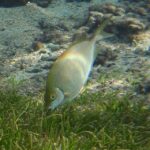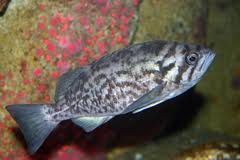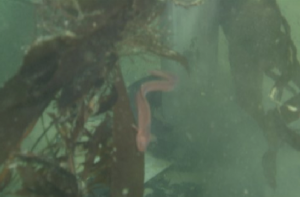Calculating life history ratios for the management of data-limited fisheries

Location: Kenya
Collaborators: Austin Humphries (University of Rhode Island)
Project Duration: 2023
Goal: To calculate optimum length, length at maturity and spawning potential ratios, and MSY for the management of data-limited, coral reef fisheries
Description: I used the R packages lbspr and TropFishR (as well as rFishBase and FishLife) to estimate life history parameters, calculate life-history ratios, and generate estimates of effort, yeild and MSY for 60+ data-limited coral reef species. This work was a small piece of a much larger project being conducted by the Wildlife Conservation Society (WCS).
Pelagic-benthic coupling in kelp forest ecosystems

Location: Central California
Collaborators: Mark Carr (UC Santa Cruz), Aaron Galloway (Oregon State U)
Project Duration: 2014-2018
Goal: To understand mechanisms and ecological consequences of ecosystem connectivity in the kelp forest ecosystem
Description: I used traditional diet content analysis and stable isotopes to understand how trophic interactions in the kelp forest fish assemblage respond to resource pulses from adjacent pelagic ecosystems. These projects shed light on the factors that influence nearshore fishery productivity, especially those related to kelp forest connectivity with the open ocean.
Scientific Milestones: Ecosphere open access publication on ocean subsidies to kelp forests can be found here. And my MEPS publication on pelagic energy in the diets of nearshore rockfishes can be found here.

Use of drift vegetation as an ecological subsidy by a deep sea fish (and notes on this eelpout’s life history)
Location: Monterey Bay, California
Collaborators: Greg Cailliet, Richard Kliever (CSU Moss Landing Marine Labs)
Project Duration: 2016-2017
Goal: To quantify the importance of this relatively obscure (but very cool) subsidy from kelp forests to the deep sea
Description: I investigated trophic and habitat subsidies from the nearshore kelp forest environment to adjacent deeep-sea canyons using the persimmon eelpout (Eucryphycus californicus) as a case study. This work was conducted using data collected by Richard Kliever, Moss Landing Marine Laboratory.
Scientific Milestones: Our Environmental Biology of Fishes paper on the persimmon eelpout can be found here.